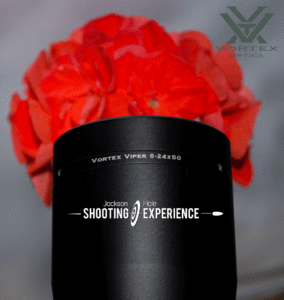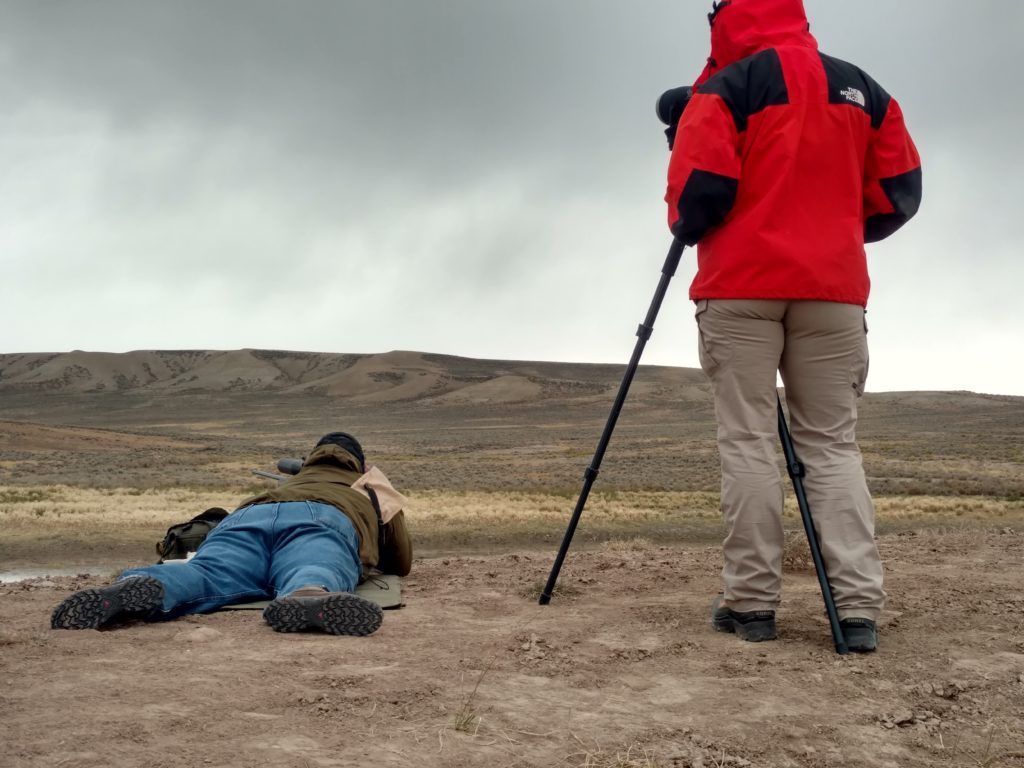🤠👍 Is Vortex Viper Good for Long Range Shooting?
Is Vortex Viper Good for Long Range Shooting?
Vortex Viper HS-LR 6-24×50 Scope Review by Rev David Bott
After four decades of hunting, I decided to spend some money on decent optics. I have always settled for whatever was cheap and “good enough” to get by at the range and in the field. I do spend good money on scope bases and rings – Leupold in this case.
For two seasons in a row, I zeroed my rifle and took it into the field, only to miss shots that I should have easily made. After the first time, I decided to check the zero once I arrived at camp and before taking a shot at game. That time the rifle rode in a scabbard strapped to the saddle of my trusty, albeit borrowed steed, Joe. We did have a couple of jumps over deadfall and creek crossings (Joe had new shoes and didn’t like to get his feet wet.) The rifle did not take any of what I would consider “serious bumps”, but upon arrival I checked the zero. The test shots were still a ragged hole, but 2 ½ minutes left of, and 1 ½ minutes over my zero.
I re-zeroed and went about the hunt. The rifle lived across my back and I went on foot up, down, over and across the rugged backcountry of the western Wyoming mountains. It did get jostled but nothing resembling a bump or knock. Nearing sundown one evening I was given a broad-side shot on a nice bull elk at 414 yards. The first shot was a miss. The bull stood there with a look on his face like: “are you kiddin’ me?” The second shot likewise was a waste of powder. The bull shook his head in disgust and strolled back into the timber. Though certain I missed, we hiked up to check for blood, fur, or bone – nothing. I think I heard him snicker, but I cannot be sure.
When I returned to the range, I shot a sub-moa group, but it was six minutes high of my zero, and one minute right. That scope is now for sale …cheap. Enter the Vortex Viper HS-LR 6-24 x 50 FFP XLR, or as it’s more commonly known as the VHS-4316-LR. One magnificent optic!
As stated above, I decided to “invest” in a riflescope, so I did my research. Sporting goods outlets have nice varieties you can pick up (to feel the weight, instead of just reading and imagining what that many ounces felt like). You can look through them, turn the dials and all, but in most cases you can get very little accurate information. (Hint: If you ask “which ones are first or front focal plane?” and all you hear in reply is crickets chirping …disregard last transmission.)
Manufacturer’s websites, periodical reviews, and men and women whom I knew to be competent, genuine experts were my sources of information. I spoke with manufacturer reps at SHOT Show. I spoke with reps from, and looked into (pun intended) NightForce, Leupold, Swarovski, Trijicon, Vortex, Nikon, Burris, and Bushnell. With that cross-section of the market, I thought I was giving myself sufficient information to make an informed decision and subsequent purchase. I quickly realized, at least with the higher end models, the most difficult part of this purchase was going to be convincing my wife to forgo our IRA contribution for the next couple of years. Yikes!
Now I believe that in the vast majority of instances, you do in fact “get what you pay for”. But sometimes, you don’t – at least not in any discernible manner. I am well acquainted with the marketing ploy of “snob appeal”. That’s when manufacturers place a premium price-point on their product with the intent to make the consumer feel they are getting the better, if not best quality, despite the lack of empirical data to support or refute the assumption. However, I do not earn enough money to be a snob – at least not a genuine snob. Alas, I am consigned to faux-snobbery.
The data available for most optics is voluminous. I selected my criteria based on the input I received from the experts with whom I spoke. Clarity, consistency, firmness in the controls, nation of manufacture, and price were all part of my “at-the-sales-counter” investigations. Speaking for myself, I cannot determine with the naked eye, within a hundredth of a lux the exact amount of light one scope transmits over another. I cannot measure its “light-gathering capabilities.” I can tell if there is relatively consistent light transmission across the diameter of the viewing lens. For instance, are there rainbows at the edges? That can mean the light spectrum is being broken down toward the edges and the viewing suffers. If at the edge you see R*O*Y*G*B*I*V pick another optic. I can determine if I see an object clearly through the viewable diameter of the lenses. Does it wash out or seem to ripple. I can determine if my viewing remains consistent trough the magnification range. I can easily determine if the reticule is appealing to me, or is it so busy that I cannot concentrate on my point of aim. Personally, I do not like a reticule that looks like the front page of the Wall Street Journal. That is TMI.
 Much of the rest of my analysis was based on value – deciding how much I wanted to spend. (My wife passed on the idea of foregoing our IRA contributions.) That meant that I would judge between the features offered, and deciding whether or not I trust the manufacturer and their claims. Will they stand behind their product? And, will it be a no questions asked service, or will I have to prove up a claim with graphs, charts, eye-witness accounts, video and photographic evidence that a Yeti did in fact crush my scope? (I mean, the ice chest fell on it.)
Much of the rest of my analysis was based on value – deciding how much I wanted to spend. (My wife passed on the idea of foregoing our IRA contributions.) That meant that I would judge between the features offered, and deciding whether or not I trust the manufacturer and their claims. Will they stand behind their product? And, will it be a no questions asked service, or will I have to prove up a claim with graphs, charts, eye-witness accounts, video and photographic evidence that a Yeti did in fact crush my scope? (I mean, the ice chest fell on it.)
The reviews of the customer service are where Vortex shot to the front. Vortex was checking all of the boxes. The fact that it is U.S. made (except for the glass) was a big bonus for me as a devout statist. They were not the only one, of course. All of the manufacturer mentioned above were in the hunt with most of the boxes checked. The amount and degree of positive feedback regarding Vortex customer service was extremely encouraging.
The Vortex Razor was and still is out of my league as far as price. So, the Vortex Viper was a very close second without forfeiting many features. The reviews I read about the Viper spoke well of its durability. I wanted/needed a scope that could hold zero with a moderate jostling.
So far, my Viper is rock-solid, though Joe and I have not yet had the opportunity to go creek-jumping. The controls are substantial. They are firm enough to not get bumped off their settings, but not so tight to need a full-fisted grip to turn them. The range from minimum magnification to maximum is reached in only a half turn of the ocular piece. The zero-set is simple to use and the fiber-optic index makes my zero easy to find while in position on the scope.
Since my Vortex Viper was going on my long-range shooter, I was sold on the First Focal Plane. The XLR reticule gives me the information I want and nothing I do not. The laser-etched markings are crisp and clear through the full range of magnifications. The edge-to-edge clarity and visually discernible light transmission are both brilliant.
In my opinion, the Vortex is comparable in performance and features to the NightForce, Leupold, and Swarovski, because that is what I have done, compare them – feature to feature, dollar for dollar. The price of the Vortex Viper was in line with what I was willing to spend. Vortex has a great variety of optics, and I have been very impressed with each one I have used and every one that I own. I am delighted with the purchase and planning to secure a Gen. II Vortex Viper for my RPR in the very near future. In Vortex have found shooting optics with zero distortion AND zero buyer’s remorse! Thank you Vortex for making great optics affordable!
This Vortex Viper 6-24×50 Scope Review by Rev David Bott

